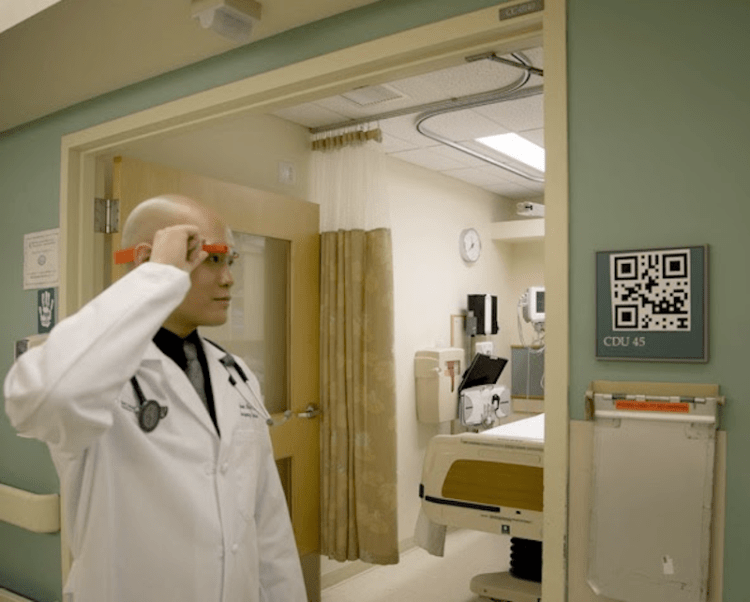Whatever other killer apps may emerge, Google Glass is on its way to becoming a home run for medicine.
A recent case in point: Boston’s Beth Israel Deaconess hospital has been testing Glass in the Emergency Department – and the CIO has blogged about it. (Medical professionals blog a lot these days.)
“I believe wearable computing will replace tablet-based computing for many clinicians who need their hands free and instant access to information,” wrote Dr. John Halamka today. A medical doctor, Halamka is CIO at the hospital.
Glass is being used there to securely access internal data while doctors speak with and examine patients in the Emergency Department. Halamka posted that the device “really differentiates itself when it comes to real-time updates and notifications,” especially when coupled with location services that can call up the right data for the right place.
“What we really want to see evolved is electronic health records transmitted directly into Google Glass in real time,” Dr. Ismail Nabeel told VentureBeat.
Related: A Stanford surgeon is experimenting with using augmented reality with Google Glass
Nabeel, an attending physician and assistant professor in the Wexner Medical Center at Ohio State University in Columbus, pointed out that medical uses of Glass are currently limited by such issues as its lack of integration with hospital systems.
“It’s just like the iPhone was [in 2007]”, he noted.
One function that is operational and valuable, he said, is its ability to record and transmit audio and video. At Ohio State, the device has been used hands-free to record during a surgery as well as to conduct searches via voice.
While live streams of hands-free interactive data could add a value that medicine has never had before, documentation could be the big-time saver that drives the industry to fully adopt such a device.
“Documentation takes up to to 50 percent of a doctor’s time,” Dr. Jennifer Joe told us. Joe is the founder/editor-in-chief of a Boston-based non-profit, MedTech, that is helping to introduce new technology to clinicians.
As part of that effort, MedTech is conducting a Google Glass Challenge, only the second in the nation.
She pointed to two of the most interesting entries in the first round. In one proposal for Massachusetts General Hospital, Glass-recorded audio is coupled with selected video and still photos to take the place of the detailed and time-consuming documentation that normally follows surgery.
Another, again at Beth Israel Deaconess, seeks to document the 15 parameters of stroke patients from the time they enter the emergency room. Giving the correct treatment at the correct time for a rapidly changing stroke victim can make the critical difference.
Medical documentation is also essential to medical education, and Joe pointed out, “Being able to see a surgery from the surgeon’s point of view has never been done before.”
Glass could also lead to more patient time. Prepping with records before seeing a cancer patient, she said, “is 30 to 45 minutes of a doctor’s time,” but one proposal to MedTech would reduce it to ten minutes or so in the hallway on your interactive eyepiece.
“Google Glass,” she said, “is definitely a game changer.”


